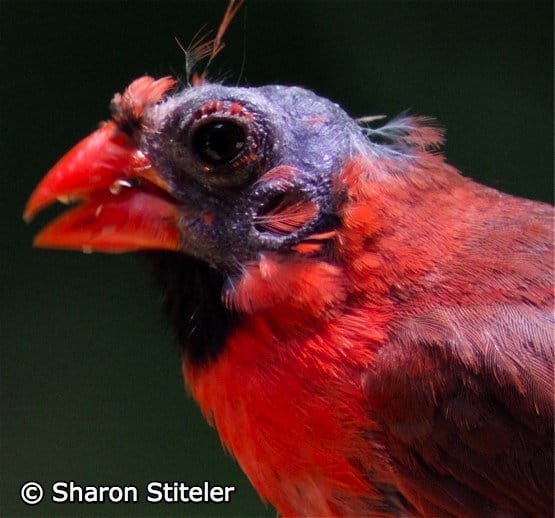In all of North America, only one avian species serves as both the beloved mascot of seven states as well as the totem to two professional sports teams (and an infinity of amateur ones!) Ironically, this feathered figurehead is neither a bird of prey nor particular distinguished athletically. Rather, this icon is extremely adaptable and eye-catching. Say hello to the charismatic Cardinal.
 When it comes to cardinals and sports, the first and foremost organization to come to mind has to be baseball’s St. Louis Cardinals, and not just because they’re Corey’s favorite team. The St. Louis Cardinals is one of the winningest (this is a real word in the sports world) franchises in all of baseball in terms of World Series crowns, second only to the storied New York Yankees. Clearly, their name change way back in 1900 earned the respect of the baseball gods. What was their name before they assumed the mantle of the Redbirds? The Perfectos.
When it comes to cardinals and sports, the first and foremost organization to come to mind has to be baseball’s St. Louis Cardinals, and not just because they’re Corey’s favorite team. The St. Louis Cardinals is one of the winningest (this is a real word in the sports world) franchises in all of baseball in terms of World Series crowns, second only to the storied New York Yankees. Clearly, their name change way back in 1900 earned the respect of the baseball gods. What was their name before they assumed the mantle of the Redbirds? The Perfectos.
 The Arizona Cardinals of the National Football League, on the other hand, are not nearly as successful. True, they are the oldest continuous professional American football club in the United States, running hard since 1898. However, in their migrations from Chicago to St. Louis to Glendale, AZ, they’ve only won a couple of championships. In fact, they hold the NFL record for the longest championship drought and have never even made a Super Bowl appearance. Not that making it to the show might make any difference: only one football team named for a bird has ever won the NFL championship!
The Arizona Cardinals of the National Football League, on the other hand, are not nearly as successful. True, they are the oldest continuous professional American football club in the United States, running hard since 1898. However, in their migrations from Chicago to St. Louis to Glendale, AZ, they’ve only won a couple of championships. In fact, they hold the NFL record for the longest championship drought and have never even made a Super Bowl appearance. Not that making it to the show might make any difference: only one football team named for a bird has ever won the NFL championship!
Most people’s knowledge of cardinals begins and ends with the real redbird. The Northern Cardinal is literally the cardinal of cardinals. The male bird’s scarlet plumage and pert crest was reminiscent enough of a Roman Catholic cardinal’s colored robes to earn it, its family, and its genus the name they all share. Cardinalis cardinalis is an extremely prevalent bird throughout much of its range. Its common name, however, is a bit of a misnomer, unless “Northern” refers to the landmass north of the equator; this species extends from some southern Canadian provinces through the entirety of the eastern United States into Mexico and down to Guatemala and Belize.
However, there are much more to cardinals than just the beloved mascot of seven states and various sports teams. The family Cardinalidae encompasses a plethora of New World passerines. This diverse group of strong-billed seed-eaters, 42 species strong, includes the North American buntings (Indigo, Painted, Lazuli, Varied, and others), the cardinal-grosbeaks (including Rose-breasted, Black-headed, and Crimson-collared), saltators, and the delightful Dickcissel. The most recent additions to Cardinalidae are the Piranga, Habia, and Chlorothraupis tanagers.
Within this family, one finds more familiar footing with the genus Cardinalis. Within this genus, one finds not only the Northern Cardinal but its close relative, the discommodiously designated Pyrrhuloxia. Cardinalis sinuatus, whose common name is roughly translated as “flame-colored crossbill” can be found throughout the American Southwest and Mexico. The third member of this genus, the Vermilion Cardinal, closely resembles its Northern cousin. However, Cardinalis phoeniceus is a South American species.
Note that while many other species, such as the Red-crested Cardinal (Paroaria coronata) of Hawaiian fame, bear the name and even likeness of species in the genus Cardinalis, they are not true cardinals.

Don’t be alarmed if you see a bald cardinal… there is a reason.
(This post was first published in August 2008 but has been republished because cardinals are always cool!)














Fascinating disquisiton on cardinals and their relatives. I grew up in Texas and Oklahoma where they are quite abundant; it was one of the few bird species I could i.d. long before I ever became a birdwatcher. A few summers ago I had the great pleasure seeing a Pyrrhuloxia in the Davis Mts. in deep West Texas. Thanks for all the great info!
Cardinalidae is an interesting family, and it is one of several where the English terminology starts to break down. The relationship between the cardinals and grosbeaks is easy to imagine (despite the presence of a “grosbeak” among the finches), but the buntings look like they belong with the finches. Then the dickcissel appears to be almost suae familiae.
Ok, I admit I had to look up “discommodiously”. You get a lot of use out of those $.50 words. Great write-up. I wonder what the reasoning is behind including the North American Buntings so separate from the rest of the named “buntings”.
I think the issue is that common names are often based on physical characteristics while taxonomy uses genetic heritage. All grosbeaks and buntings have these stout, conical bills. They just come by them in different ways. The Black-headed Grosbeak looks like it’s related to the Evening Grosbeak, but one is a cardinal and the other a finch.
As a livelong resident of one of the mascotted (real word in the world of make believe) states, Illinois, I loved this review.
Of course, I am biased as a St. Louis Cardinal fan, but there is a very low number of people in the birding and non-birding realm that could ever look at a cardinal and not think it is awesome.
I have a large number of cardinals with dark brown beaks. I also have them with orange beaks. I have been trying to find out why the different colors. Does this have to do with age? Appreciate answer to this little mystery. I know I have way too much time on my hands. thanks , janis harvey
It’s a joy to see a beautiful Cardinal at the feeder. They seem to be a very private bird.
Thank you so much for the info on cardinals. Now i finally have enough info do finish up my project because of you. Now i know where to go if i ever need to do a report on birds. Keep writing and telling the world about birds.
@Mike: This is something of a “cardinal day”! This morning I learned not only that there are other types of cardinals than the Northern one, but that they weren’t prevalent in the U.S. until the last century. Someone who’s entering old Chicago Ornithological Society records into eBird told me that cardinals weren’t regularly seen in this area until the 1950s. And here I always thought of them as everyday birds. Wow! (Always love seeing your photo of that cheeky little guy, too!)
Thank you for your article. But you are very wrong on two points. If I may…
1 – Three “bird” teams have won NFL Championships… Eagles, Ravens & Cardinals. Note I said NFL Championship not Superbowls.
Chicago Cardinals – NFL Champs 1947
2 – The Arizona Cardinals were in SUPERBOWL XLIII. That was in 2008.
Thank you for your time. GO CARDINALS!!!
Now I’m confused. Not being a better, from what bits and pieces I’ve read over the years it was my understanding the Cardinals are finches. This is not the case?